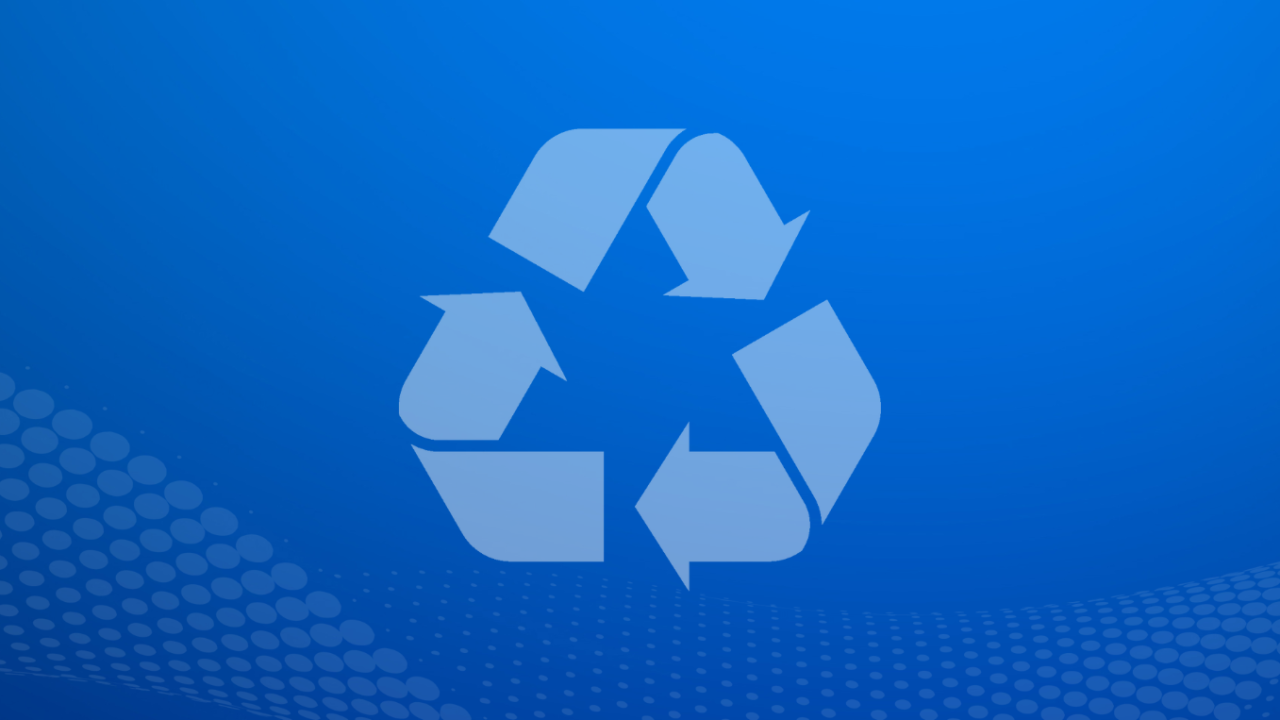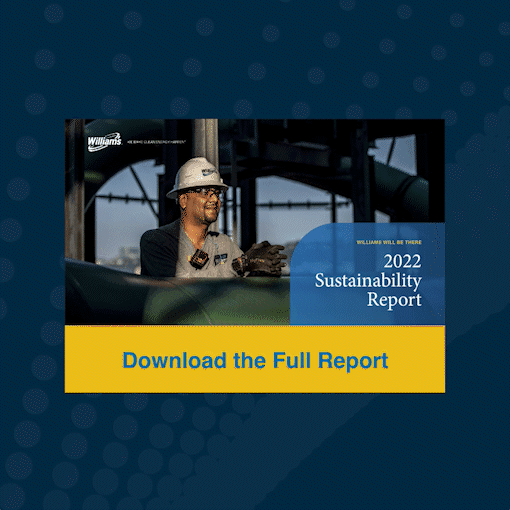Williams generates waste during the transportation, gathering, processing and treating processes. Common types of waste generated at our facilities and pipeline systems include used oil, pipeline liquids, pipeline/vessel sludge, used filters, pipeline coating, scrap metal and contaminated soils. While waste represents a relatively small portion of our overall environmental impact, Williams focuses on proactively reducing our operational waste and effectively managing the waste we generate. We design our approach to managing nonhazardous and hazardous waste from our operations to mitigate environmental impacts, promote safe operations, protect human health and reduce cost.
Waste Management
The Williams Integrated Management System (WIMS) establishes a standardized process for managing hazardous and non-hazardous waste at company sites, including characterization, storage, handling, packaging, transportation and disposal. We manage operational waste through prescriptive measures, including placing waste in designated, labeled containers, maintaining waste storage areas, conducting inspections and disposing of waste based on all applicable regulations. Our environmental specialists assist operations with waste characterization, disposal and reporting. Additionally, we evaluate waste management practices and performance as a part of our Environmental Assessment Program (EAP) for enhanced compliance assurance. Combined with training and compliance audits, these measures form the basis of our waste management approach.
In 2022, Williams established a Waste Handling Optimization goal for 2023 in our Transmission and Gulf of Mexico operating area. Our goal has three objectives: evaluate waste tracking platforms to establish a consistent, area-wide format for tracking all waste streams; develop a preferred list of well-performing waste vendors to handle our waste; and develop resources to aid with proper waste management activities, such drum labeling, storage area requirements and other topics as needed.
Williams reviewed 2022 data for waste generation and disposal at 14 gas processing plants and three fractionation facilities. The waste data was categorized as hazardous or nonhazardous waste, as defined by federal regulations. It was then further categorized into waste sent off-site for disposal or recycling. Produced water was excluded from 2022 waste data. Going forward, we plan to expand the review of our waste impacts as we work to develop more robust tools to gather and report waste data. The 2022 data can be seen on page 47 of our PDF report.
We provide guidelines and protocols for managing specific operational waste streams through the Williams Integrated Management System. For example, our Operating Guideline for aerosol cans lays out clear steps to characterize, manage and dispose of waste aerosol cans. The guideline includes the proper labeling, storage and disposal requirements to meet state and federal regulations. Our Operating Guideline for hydrovac slurry, a construction biproduct composed of soil and water, allows for the reuse of the slurry when following specific protocols. Before initiating construction, we require construction projects that will engage in significant excavation to develop a Hydrovac Slurry and Excess Fill Materials Management Plan. Additionally, in 2022, we upgraded our Operating Procedures to prescribe a more consistent approach for managing polychlorinated biphenyl (PCB) waste.
As part of our commitment to conduct business in a safe and reliable manner, we manage chemical inventory reporting through our internal operating requirement for Tier II reporting and hazard communication. Environmental specialists prepare and submit annual Tier II chemical inventory reports to the appropriate regulatory agencies. Additionally, beginning in 2022, Williams prepared for Toxic Release Inventory (TRI) reporting requirements for gas processing plants under NAICS code 211130 established for the 2023 reporting deadline. Williams’ Safety Data Sheets are publicly available to provide interested stakeholders with detailed information that meets local, state and federal requirements. For more information about Williams’ Safety Data Sheets, visit our website.
Mercury contaminants can potentially accumulate in the piping and vessels of our operating assets, generating hazardous waste. In 2022, we completed a large scale mercury evaluation across the Transco system to identify receipt points that are sources of elevated mercury concentrations in gas and gas condensate. As a result, we plan to perform smaller site-specific evaluations at points that present the most risk. We also continue to perform mercury-in-gas sampling at our key receipt points, storage facilities and mainline compressor stations. In addition, we perform X-ray fluorescence surveys for wall-bound mercury in piping and vessels removed from service or in need of repair. Through these efforts, we safely and appropriately manage mercury exposure risks.
Radioactive waste is not a significant concern in our operations. However, we monitor evolving regulations around Technologically Enhanced Naturally Occurring Radioactive Materials (TENORM) and continue to analyze our waste streams for specific radionuclides generally found in the oil and gas industry where applicable. As regulations develop, we will follow management and disposal requirements that may affect our waste streams.
In addition to our waste management and minimization efforts, we also discuss our approach to managing spills and releases and tracking our Loss of Primary Containment performance in the Pipeline & Asset Integrity section of this report.
Minimizing Waste
We seek waste minimization opportunities while ensuring natural gas reliability. For example, our underground hydrocarbon storage facilities in Conway, Kansas, operate caverns developed in natural salt formations to store millions of barrels of natural gas liquids. The Kansas Department of Health and Environment authorized a waste minimization process as an alternative to landfill disposal of salt-impacted earthen materials. Williams practices this emplacement process of returning natural materials to the subsurface. As a result, Williams has diverted approximately 31,000 tons of salt-impacted soil from landfill disposal since January 2017. In addition, the emplacement of these solids provides stabilization of caverns that are no longer in service for natural gas liquid storage.
In our corporate offices, we work with third-party waste handlers to recycle paper, plastic and cardboard. In 2022, our Tulsa headquarters building collected and recycled approximately 40.44 tons of these materials, which includes materials recycled on all tenant-occupied floors. To promote sustainable practices in our corporate offices, we encourage employees to avoid printing documents when possible. In 2022, we decreased the number of printed pages by 14% compared to 2021, which is equivalent to saving 66 trees and 153,214 gallons of water. In addition, Williams recycles and donates electronic hardware, such as computers and electronic accessories.
We take more waste reduction actions by assessing and identifying facilities with the greatest opportunity to switch from existing lighting technology to more efficient LED technology. In 2022, we continued replacing existing light bulbs with LED lighting helping to improve our waste management and energy efficiency.
WILLIAMS WILL BE THERE
Striving for LEED Certification
In 2022, Williams’ Facilities and Construction team advanced an ongoing initiative to modernize and remodel 10 floors of our Houston office building. The Modernization Program aims to achieve LEED gold certification by:
- Reducing volatile organic compounds and other toxic materials during construction
- Recycling, donating and selling old furniture
- Increasing use of natural light
- Integrating mechanical, electrical and plumbing controls to reduce electricity and water use
- Installing EnergyStar® rated appliances
As part of this initiative, Williams is making significant efforts to divert waste from landfills and improve resource efficiency. During renovations of three floors in 2022, Williams accumulated 3,690 cubic yards of waste, including trash, concrete, sheetrock, metal, wood, plastic and cardboard. Williams recycled 86%, or 3,189 cubic yards, of the waste produced. We plan to continue renovating floors until the program is complete, at which point we will submit for LEED certification.


